David's Astronomy Pages
Notes - Session 940 (2021-12-10)
Notes
(S939)
Notes
Main
Home
Page
Notes
(S941)
David's Astronomy Pages
|
Notes (S939) |
Notes Main |
Home Page |
Notes (S941) |
Main aims
Equipment & Software
Highlights
Summary Plots & Logs
| Observing Plan | ||||||||||||||||||||||||||||||||||||||||||||||||||||||||||||||||||||||||||||||||||||||||||||||||||||||||||||||||||||||||||||||||||||||||||||||||||||||||||||||||||||||||||||||||||||||||||||||||||||||||||||||||||||||||||||||||||||||||||||||||||||||||||||||||||||||||||||||||||||||||||||||||||||||||||||||||||||||||||||||||||||||||||||||||||||||||
 |
||||||||||||||||||||||||||||||||||||||||||||||||||||||||||||||||||||||||||||||||||||||||||||||||||||||||||||||||||||||||||||||||||||||||||||||||||||||||||||||||||||||||||||||||||||||||||||||||||||||||||||||||||||||||||||||||||||||||||||||||||||||||||||||||||||||||||||||||||||||||||||||||||||||||||||||||||||||||||||||||||||||||||||||||||||||||
|
Observing Result |
||||||||||||||||||||||||||||||||||||||||||||||||||||||||||||||||||||||||||||||||||||||||||||||||||||||||||||||||||||||||||||||||||||||||||||||||||||||||||||||||||||||||||||||||||||||||||||||||||||||||||||||||||||||||||||||||||||||||||||||||||||||||||||||||||||||||||||||||||||||||||||||||||||||||||||||||||||||||||||||||||||||||||||||||||||||||
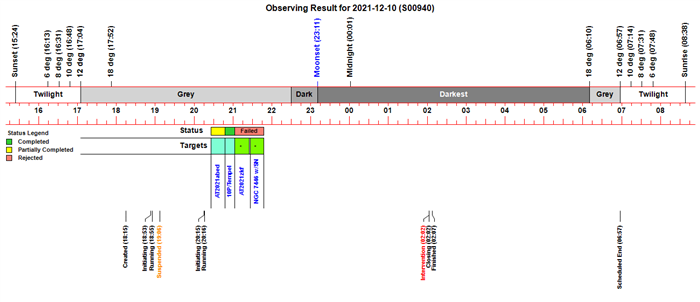 |
||||||||||||||||||||||||||||||||||||||||||||||||||||||||||||||||||||||||||||||||||||||||||||||||||||||||||||||||||||||||||||||||||||||||||||||||||||||||||||||||||||||||||||||||||||||||||||||||||||||||||||||||||||||||||||||||||||||||||||||||||||||||||||||||||||||||||||||||||||||||||||||||||||||||||||||||||||||||||||||||||||||||||||||||||||||||
| Dome & Scope Slewing Performance | ||||||||||||||||||||||||||||||||||||||||||||||||||||||||||||||||||||||||||||||||||||||||||||||||||||||||||||||||||||||||||||||||||||||||||||||||||||||||||||||||||||||||||||||||||||||||||||||||||||||||||||||||||||||||||||||||||||||||||||||||||||||||||||||||||||||||||||||||||||||||||||||||||||||||||||||||||||||||||||||||||||||||||||||||||||||||
 |
||||||||||||||||||||||||||||||||||||||||||||||||||||||||||||||||||||||||||||||||||||||||||||||||||||||||||||||||||||||||||||||||||||||||||||||||||||||||||||||||||||||||||||||||||||||||||||||||||||||||||||||||||||||||||||||||||||||||||||||||||||||||||||||||||||||||||||||||||||||||||||||||||||||||||||||||||||||||||||||||||||||||||||||||||||||||
|
Slew/Centering Performance Poor centering performance in Dec. One rogue jog. |
||||||||||||||||||||||||||||||||||||||||||||||||||||||||||||||||||||||||||||||||||||||||||||||||||||||||||||||||||||||||||||||||||||||||||||||||||||||||||||||||||||||||||||||||||||||||||||||||||||||||||||||||||||||||||||||||||||||||||||||||||||||||||||||||||||||||||||||||||||||||||||||||||||||||||||||||||||||||||||||||||||||||||||||||||||||||
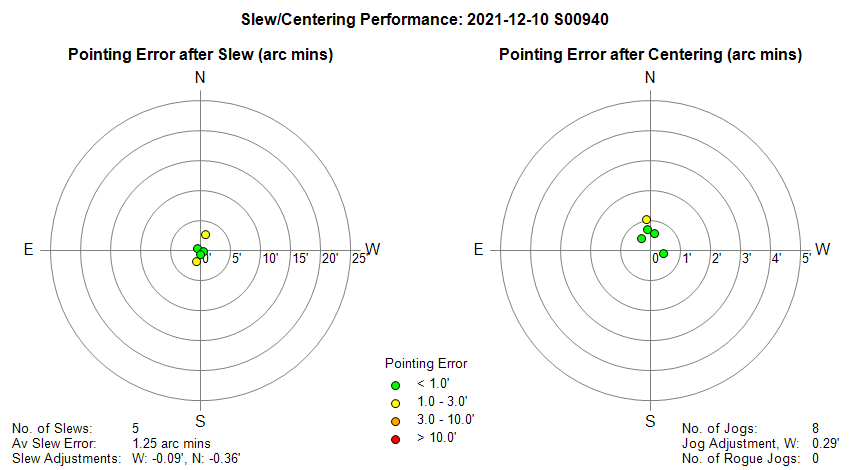 |
||||||||||||||||||||||||||||||||||||||||||||||||||||||||||||||||||||||||||||||||||||||||||||||||||||||||||||||||||||||||||||||||||||||||||||||||||||||||||||||||||||||||||||||||||||||||||||||||||||||||||||||||||||||||||||||||||||||||||||||||||||||||||||||||||||||||||||||||||||||||||||||||||||||||||||||||||||||||||||||||||||||||||||||||||||||||
|
Guiding Performance Reasons for poor guiding :
|
||||||||||||||||||||||||||||||||||||||||||||||||||||||||||||||||||||||||||||||||||||||||||||||||||||||||||||||||||||||||||||||||||||||||||||||||||||||||||||||||||||||||||||||||||||||||||||||||||||||||||||||||||||||||||||||||||||||||||||||||||||||||||||||||||||||||||||||||||||||||||||||||||||||||||||||||||||||||||||||||||||||||||||||||||||||||
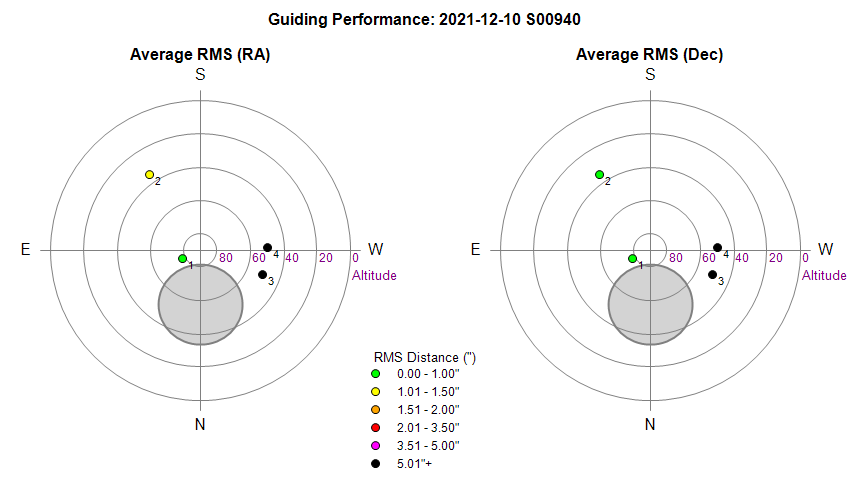 |
||||||||||||||||||||||||||||||||||||||||||||||||||||||||||||||||||||||||||||||||||||||||||||||||||||||||||||||||||||||||||||||||||||||||||||||||||||||||||||||||||||||||||||||||||||||||||||||||||||||||||||||||||||||||||||||||||||||||||||||||||||||||||||||||||||||||||||||||||||||||||||||||||||||||||||||||||||||||||||||||||||||||||||||||||||||||
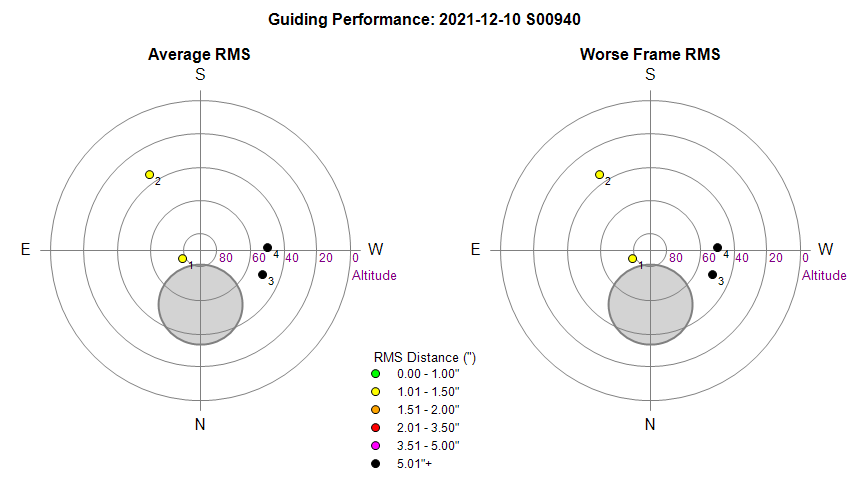 |
||||||||||||||||||||||||||||||||||||||||||||||||||||||||||||||||||||||||||||||||||||||||||||||||||||||||||||||||||||||||||||||||||||||||||||||||||||||||||||||||||||||||||||||||||||||||||||||||||||||||||||||||||||||||||||||||||||||||||||||||||||||||||||||||||||||||||||||||||||||||||||||||||||||||||||||||||||||||||||||||||||||||||||||||||||||||
|
Sky Conditions (Locate Frames) Sky Brightness measurements are invalid due to a SBIG camera bias level issue (eventually fixed 2022-01-02) |
||||||||||||||||||||||||||||||||||||||||||||||||||||||||||||||||||||||||||||||||||||||||||||||||||||||||||||||||||||||||||||||||||||||||||||||||||||||||||||||||||||||||||||||||||||||||||||||||||||||||||||||||||||||||||||||||||||||||||||||||||||||||||||||||||||||||||||||||||||||||||||||||||||||||||||||||||||||||||||||||||||||||||||||||||||||||
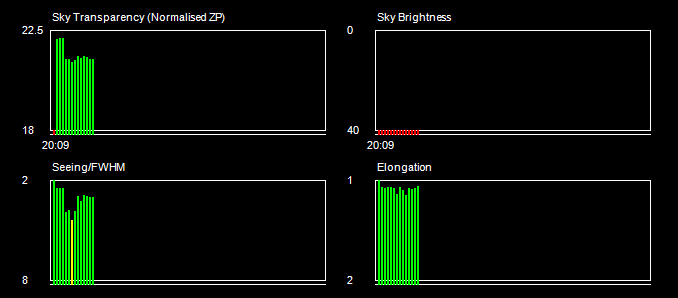 |
||||||||||||||||||||||||||||||||||||||||||||||||||||||||||||||||||||||||||||||||||||||||||||||||||||||||||||||||||||||||||||||||||||||||||||||||||||||||||||||||||||||||||||||||||||||||||||||||||||||||||||||||||||||||||||||||||||||||||||||||||||||||||||||||||||||||||||||||||||||||||||||||||||||||||||||||||||||||||||||||||||||||||||||||||||||||
|
Night Sky Summary Plot Top axis: Sky Brightness at Zenith (in ADU/s) Lefthand axis: Local Time (hh LT). Righthand axis: Sun Altitude (degs) |
||||||||||||||||||||||||||||||||||||||||||||||||||||||||||||||||||||||||||||||||||||||||||||||||||||||||||||||||||||||||||||||||||||||||||||||||||||||||||||||||||||||||||||||||||||||||||||||||||||||||||||||||||||||||||||||||||||||||||||||||||||||||||||||||||||||||||||||||||||||||||||||||||||||||||||||||||||||||||||||||||||||||||||||||||||||||
 |
||||||||||||||||||||||||||||||||||||||||||||||||||||||||||||||||||||||||||||||||||||||||||||||||||||||||||||||||||||||||||||||||||||||||||||||||||||||||||||||||||||||||||||||||||||||||||||||||||||||||||||||||||||||||||||||||||||||||||||||||||||||||||||||||||||||||||||||||||||||||||||||||||||||||||||||||||||||||||||||||||||||||||||||||||||||||
|
Actual Weather vs Pre-Session Weather Forecast |
||||||||||||||||||||||||||||||||||||||||||||||||||||||||||||||||||||||||||||||||||||||||||||||||||||||||||||||||||||||||||||||||||||||||||||||||||||||||||||||||||||||||||||||||||||||||||||||||||||||||||||||||||||||||||||||||||||||||||||||||||||||||||||||||||||||||||||||||||||||||||||||||||||||||||||||||||||||||||||||||||||||||||||||||||||||||
 |
||||||||||||||||||||||||||||||||||||||||||||||||||||||||||||||||||||||||||||||||||||||||||||||||||||||||||||||||||||||||||||||||||||||||||||||||||||||||||||||||||||||||||||||||||||||||||||||||||||||||||||||||||||||||||||||||||||||||||||||||||||||||||||||||||||||||||||||||||||||||||||||||||||||||||||||||||||||||||||||||||||||||||||||||||||||||
 |
||||||||||||||||||||||||||||||||||||||||||||||||||||||||||||||||||||||||||||||||||||||||||||||||||||||||||||||||||||||||||||||||||||||||||||||||||||||||||||||||||||||||||||||||||||||||||||||||||||||||||||||||||||||||||||||||||||||||||||||||||||||||||||||||||||||||||||||||||||||||||||||||||||||||||||||||||||||||||||||||||||||||||||||||||||||||
| Session Event Log | ||||||||||||||||||||||||||||||||||||||||||||||||||||||||||||||||||||||||||||||||||||||||||||||||||||||||||||||||||||||||||||||||||||||||||||||||||||||||||||||||||||||||||||||||||||||||||||||||||||||||||||||||||||||||||||||||||||||||||||||||||||||||||||||||||||||||||||||||||||||||||||||||||||||||||||||||||||||||||||||||||||||||||||||||||||||||
|
||||||||||||||||||||||||||||||||||||||||||||||||||||||||||||||||||||||||||||||||||||||||||||||||||||||||||||||||||||||||||||||||||||||||||||||||||||||||||||||||||||||||||||||||||||||||||||||||||||||||||||||||||||||||||||||||||||||||||||||||||||||||||||||||||||||||||||||||||||||||||||||||||||||||||||||||||||||||||||||||||||||||||||||||||||||||
| Session Alerts | ||||||||||||||||||||||||||||||||||||||||||||||||||||||||||||||||||||||||||||||||||||||||||||||||||||||||||||||||||||||||||||||||||||||||||||||||||||||||||||||||||||||||||||||||||||||||||||||||||||||||||||||||||||||||||||||||||||||||||||||||||||||||||||||||||||||||||||||||||||||||||||||||||||||||||||||||||||||||||||||||||||||||||||||||||||||||
|
Back to Top
Back to Top
Following a total failure of old Observatory Computer (2021-12-05) a
replacement computer has been acquired (2021-12-09) and software including
multiple pieces of observatory software installed (2021-12-09 to 10). This
included ASCOM 6.5 SP1,Software Bisque software (TheSky6, CCDSoft5 and
TPoint), Pegasus Power Box, and ASCOM drivers (UPB, PulsarDome,
TCF-S focuser, MeadeGeneric, SBIG, ZWO ASI) and AstroSuite/Observatory
Control software (AstroMain, AstroPlan, AstroGuard, AstroLaunch, AstroShCap)
and support programs (PHD2, SharpCap 3.2). Various settings were taken from
setting recovered from old observatory computer's SSD drive (using an mSata
to USB adapter) or recreated where necessary.
- Issues
discovered during installation and resolved are described here.
Pre-Session Issues (Daytime Testing)
The following
issues were found during the daytime testing in the observatory and resolved
prior to the nightime session.
(see Operational Issues for more details and current status)
Session Issues (Night-time Testing)
The following
issues arose setting up and conducting a nightime session
(see Operational Issues for more details and current status)
Com Ports
| Device | Primary Com Port | Secondary Com Port | ||
| Pulsar Dome | COM3 | unknown (n/a) | ||
| UPB Powerbox | COM4 | unknown (n/a) | ||
| TCF-S Focuser | COM5 | unknown (n/a) | ||
| LX200 Telescope | COM6 | unknown (n/a) |
Whilst primary COM Port numbers are identified for the key observatory
equipment that use Serial ports, and recorded in the necessary program
settings (AstroMain and later in AstroLaunch) it hasn't been possible to
determine secondary ports. These are port numbers that device can
potentially jump to if inserting USB cables into different ports on the USB
hub/computer or for some other hardware, software or Windows OS glitch.
This was seen on the old observatory computer (Windows 7) but it is not yet
known if this behaviour will be seen on the new observatory computer
(Windows 10). Rebooting the computer always results in
devices returning to their respective primary COM Port.
AstroMain has routines that automatically update ASCOM profiles to
use the primary/secondary COM port dependant on which Port is active, and
monitor sessions in progress to see if Com Port has switched and
automatically restart the connection to the respective device on the new
port. Until secondary ports are identified these routines
won't be able to perform the task of automatically resetting the driver COM
port setting if the device jumps to a secondary port.
Update
2022-06-21: During the first 6 months / 80 sessions since
installation of a new observatory computer on 2021-12-10 the attached
devices have continuously remained locked-on their original COM Port
settings.. This would seem to be associated with either new computer
hardware / USB controller or with the use of Windows 10 operating system
(instead of Windows 7).
Back to Top
Issue : Guiding Runaway occuring in RA after performing PHD2 Calibration on new observatory computer
Description
After the failure of the previous
Observatory Computer after session S939 (2021-12-05) a new Calibration had
to be performed on the new replacement computer. This was performed at
the start of session S940 (2021-12-10) using a starfield close to Dec 0 and
just east of the celestrial meridian. Calibration data was
checked and satisfied with its quality, the observing session was begun
Guiding performance on the first two targets was good. Both target lays
east of Meridian, i.e on the same side as where the Calibration was
performed.
Guiding performance on the next 3 targets (AT2021zkf,
NGC_7446 & M31) was terrible with immediate runaway in RA guiding. It
appeared that each RA guide pulses was pushing the star further and further
away from star lock position. Quickly the RA guide pulses
reached the Maximum RA guide pulse setting of 2500 ms. Over the course
of a 180s exposure telescope was being shifted some 9 arc minutes in cases
where the guide star was followed and not lost. Often the guide
star would eventually became lost.
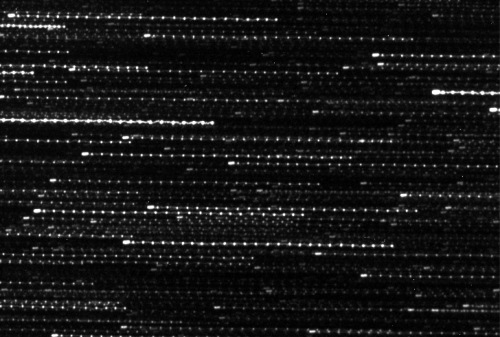
180s exposure, C Filter, #940017

The 3 targets with terrible guiding all lay on the west side of the Meridian, i.e. on the opposite to where the calibration was performed.
Whilst guiding on the observatory telescope is generally poorer on the
west side of the Meridian (due usually to Dec guiding / possibly balance
issue), the guiding character is nothing like these new cases
which are clearly suffering from RA guding runaway.
Investigation
The observing objectives for the
session was placed on hold, whilst investigation was carried out.
This began with guiding test on starfields just west of and just of the
Meridian. The starfield just west of the Meridian suffered from
the same terrible guiding whilst the starfield just east of the Meridian had
normal guiding.
The tests were repeated with same result. A test
was performed where guiding started east of the Meridian and kept running
whilst the starfield crossed the Meridian, this has normal guiding
throughout. The pointing position (the SideOfPier) when the guiding
started was a key factor, not the pointing position (SideOfPier) later on.
This indicated a 'SideOfPier' related issue, and seemed to try up
somehow with the appearence in July 2021 onwards, with warning messages from
PHD2 saying that 'SideOfPier had changed but the Calibration doesn't have
SideOfPier information'. The Calibration that was being used on the
old Observatory Computer was made prior to June 2021. With the making
of a new Calibration (for the new Computer) it suddenly had SideOfPier
information and it was evident that PHD2 was performing a Calibration flip
when starting to guide on target starfields lying on the opposite of the
Meridian.
Analysis
A calibration flip is the
appropriate action for a GEM Mounted scope when guiding on targets lying on
the opposite side of the Meridian to where the Calibration was performed.
RA pulses (and for some designs Dec pulses) have to be inverted to produce
the neccessary guiding effect.
However for my Fork & Wedge Mounted
LX200 Scope, RA and Dec Pulses shoudn't be inverted when crossing the
Meridian (It doesn't really have a SideOfPier so to speak).
There is a way to turn off Calibration Flipping in PHD2. All that can be
done is to toggle a setting so that a new calibration is automatically
performed on each and every target, which would interfer with observing and
could possibly give rise to a hold-up to automated operations if the
calibration fails and user involvement is required.
The problem is due to ASCOM telescope sending SideOfPier (pierEast or
pierWest) through to PHD2.
SideOfPier =
pierEast, or
SideOfPier = pierWest
Whilst
the issue only became exposed in my system just now when it became necessary
to do a new Calibration in PHD2 (because of a new computer)
looking back
at earlier logs on my system it can see that the issue inherently dated back
to the June 2021 version of MeadeGeneric telescope driver (v1.2.0) when it
implemented the SideOfPier property and on my system it began returning.
SideOfPier = pierUnknown
This would probably have been ok for PHD2
except that a previous change in DeviceHub made earlier in Oct 2020 (v
6.5.0.1) caused DeviceHub to step in upon seeing 'pierUnknown' from the
telescope driver and calculated a SideOfPier value ( 'pierEast' or
'pierWest') based on the telescope position.
SideOfPier = pierEast, or
SideOfPier = pierWest
The pierWest/pierEast became used by PHD2 and resulted in the
showstopping RA guiding runaway issue on my system.
It also now explains
the frequent PHD2 warnings that began to appear in July 2021, saying
Prior to June 2021 MeadeGeneric was throwing an exception on my system
SideOfPier = Not implemented
Fix (2021-12-11)
Colin Dawson and Rick Burke (authors
of MeadeGeneric Driver and of DeviceHub respectively) were contacted
regarding the issue with result that a fix was made in MeadeGeneric
development version 1.3.3.370. This was tested (2021-12-11) and for my
system the original behaviour of throwing a 'Not Implemented' exception is
restored :
SideOfPier = Not implemented
DeviceHub
see this exception and reports SideOfPier as 'Unknown' on its Telescope
Control tab and doesn't attempt to set a pierEast or pierWest but simply
passes on the exception. PHD2 reports the SideOfPier as
'N/A'.
Testing (2021-12-13)
Testing confirm that
the fix in MeadeGenric 1.3.3.370 has resolved the earlier Guiding
Runaway/SideOfPier issue
(The fix will no doubt be ruled up into a
official MeadeGeneric release in due course).
Update
(2021-12-14)
A new version 6.5.1.9 version of DeviceHub was
released today (2021-12-14) with a fix to 'Ensure that a telescope
side-of-pier is only calculated for a German Equatorial mount'.
Actions
![]() SideOfPier : Update 'TheSky6 connection' routine in
AstroMain to report the scope's SideOfPier to check that pierEast/pierWest
doesn't start to appear again following future releases of
DeviceHub/MeadeGeneric.
SideOfPier : Update 'TheSky6 connection' routine in
AstroMain to report the scope's SideOfPier to check that pierEast/pierWest
doesn't start to appear again following future releases of
DeviceHub/MeadeGeneric.
Back to Top
Issue : Telescope Tracking isn't at Sidereal Rate (contrary to the running assumption that is was on sidereal rate)
Description
Whilst looking at the telescope logs in
connection with a separate ( SideOf Pier) issue it was noticed that there
were TrackingRate messages like
13:40:56.199 TrackingRate Get
60.0 driveLunar
That was considered odd, because :
1) A
rate of 60.0 Hz would be Solar Tracking rate (driveSolar), Lunar
Tracking Rate is 57.9 Hz
2) I thought I was using a Sidereal
Tracking rate (60.1 Hz) driveSidereal
What’s going on, I
expected to see "60.1 driveSidereal' being reported !
![]()
Confirmation of Discrepency
Scope was powered up,
connected and the the Tracking Rate setting in AutoStar II examined using
Virtual Handbox . It shows that the scope is set to "Sidereal" tracking
![]()
Setting was confirmed and the MeadeGeneric log reexamined but is still
shows "60.0 driveLunar"
13:44:12.360 TrackingRate Get 60.0
driveLunar
Analysis (Problem 1)
Problem 1 was
determined to be a bug/limitation of the MeadeGeneric code which only
considers Sidereal and Lunar options
In the Get Tracking Rate function it can be see that the following code
line leads to the function returning driveLunar whenever the scope tracking
rate is not 60.1, regardless of what the rate actually is.
DriveRates result = rate == "60.1" ? DriveRates.driveSidereal :
DriveRates.driveLunar.
Bug has been reported to author of
MeadeGeneric driver for his examination/fix.
Analysis (Problem 2)
Problem 2 was harder to explain:
Why was the value returned by a GT (Get Tracking) command 60.0 , rather than
the expected sidereal rate (60.1) which should be associated with the
scope’s current Tracking Rate setting (“Sidereal”).
Eventually
this was determined to be a misunderstanding / forgotten awareness of
exactly how the observatory scope is configured after its firmware was
upgraded from 4.2g to a 4.2G patch back in 2013, and also an apparently
undocumented feature of the Custom Tracking Rate in AutoStar (or at least
its behaviour in 4.2G Patch)
In 2013 I updated the scope’s firmware to 4.2G in order to access two (at the time critical) enhancements.
This firmware behavior might explain why the GT command is returning 60.0
since if I might still have ‘60.0’ in the custom setting in the scope from
when the custom setting was last used for Solar Observing more than 12
months ago and my 4.G patched scope might use the custom value even
though the Autostar II implies that I’m using Sidereal.
Custom Rate
is specified by entering a signed value that adjusts the 'standard'
tracking rate. In 4.2g the adjustment is 'signed value * 0.1%'.
In 4.2G the adjustment is 'signed value * 0.01%'
It was thought that
the standard tracking rate reference would be sidereal rate (60.1), but it
now seems that the standard tracking rate reference is in fact 60.0
The LX200GPS/R manual states:
Custom Tracking Rate allows you to enter values from -999 (stands for -99.9%) to 999 (stands for +99.9%). The lower the number, the slower the rate. If you enter -999 the telescope will move so slow as to appear to be stopped. If you enter 999, the telescope will be moving at approximately twice the tracking rate.
but doesn't explicity say what the reference tracking rate (what does 0 exactly stand for ?)
The Sun tracks at 99.7270% of sidereal rate. I original though that this
would be entered in Autostar II's Custom Tracking as -3, representing 0.3%
slower than sidereal (-999 would stand for 99.9% slower). However for
my LX200 which has firmware updated to 4.2G v19 and uses 10x finer tracking
rate I originally thought the Custom Tracking should be set as -27,
representing 0.27% slower than sidereal, -999 would stand for 9.99%
slower) .
( I believe that I have subsequently show that this is
probably wrong and Solar Rate should be entered as +0 on my scope (i.e. 60
Hz + 0.00%) )
However the discrepancy doesn’t end there :
- I’ve gone into Scope Tracking Rate setting and went to ‘Custom’
expecting to see –27 (for Solar Rate equivalent) but it doesn’t , instead it
has the value 0 (I suppose it’s possible that it was –27 but going into
custom from a previous position of Sidereal being previously selected might
set the displayed custom value to 0 upon entry)
- If I enter a
custom value of 0, and Save it , I find ‘Sidereal’ is still the selected
Tracking Rate after going up to Telescope Setup and then going back down
into Tracking rate.
- I then entered a custom rate of +1 (which I
originally understood to be Sidereal Rate + 0.01% on my scope, ie 60.10601
Hz
But after saving this the drivers log file still reports “60.0
driveLunar”
- I then restarted the scope thinking that it needed to
go through a reboot stage to pick up the new value. The TrackingRate in the
scope is still showing as “Custom” with a value of +1 which would be equal
60.10601 Hz but the driver log file still reports “60.0 driveLunar”
Eventually I concluded that the % adjustment in ‘Custom’ isn’t a +/- %
adjustment to sidereal rate (60.1) but a +/- % adjustment to a standard 60.0
Hz rate .
- Putting in a custom rate of +17 (from (1 -
(60.1/60.0) *100 *100), leads to the driver log reporting “TrackingRate Get
60.1 driveSidereal”
So after a lot of investigation I think that’s
the second half of the discrepancy is explained.
Scope will be left
with this custom rate of +17 and the tracking/guiding behaviour of the scope
monitored during the next live session.
Actions
![]() Communicate driveLunar Tracking Rate bug to Colin Dawson (author of
MeadeGeneric driver)
Communicate driveLunar Tracking Rate bug to Colin Dawson (author of
MeadeGeneric driver)
![]() Change Custom Tracking Rate in scope to +17 (ie 60.1 Hz
equivalent)
Change Custom Tracking Rate in scope to +17 (ie 60.1 Hz
equivalent)
![]() Monitor the tracking/guiding behaviour of the scope during the next live
session (S941 session)
Monitor the tracking/guiding behaviour of the scope during the next live
session (S941 session)
![]() Update TheSky6 connection routine
in AstroMain to report scope's current
Tracking Rate
Update TheSky6 connection routine
in AstroMain to report scope's current
Tracking Rate
![]() Add routines in AstroMain and accompanying user button options for
setting the Tracking Rate on the observatory's main telescope (LX200GPS/R)
Add routines in AstroMain and accompanying user button options for
setting the Tracking Rate on the observatory's main telescope (LX200GPS/R)
Update 2021-12-14
Using :STtt.t# method of setting
tracking rate on LX200 (via btnSetTrackingRate.Click) shows some anomalies
:ST60.2# puts LX200 Tracking Rate to "Custom" , +16 (4.2G)
[ ~ +2 (4.2g) ]
but GT command returns +60.1 (ie
Sidereal Tracking Rate)
:ST60.1# (intended Sidereal Tracking Rate) puts LX200
Tracking Rate to "Sidereal"
but GT command returns +60.0 (ie
Solar Tracking Rate)
:ST57.9# (intended Lunar Tracking) puts Tracking
Rate to Custom, -365 (4.2G) [ ~ 37 (4.2g) ]
but GT
command returns 57.8
:ST58.0# puts Tracking Rate to Custom
but GT command returned 57.9 (i.e. Lunar Tracking Rate)
Send GT command... Info Tracking Rate is unknown
GT Command :
Fail Timed out waiting for received data
Send GT command
17:01:07.395 CommandString raw: False command GT
17:01:07.426 CommandString Completed: +60.1
Back to Top
| This Web Page: | Notes - Session 940 (2021-12-13) |
| Last Updated : | 2024-03-23 |
| Site Owner : | David Richards |
| Home Page : | David's Astronomy Web Site |